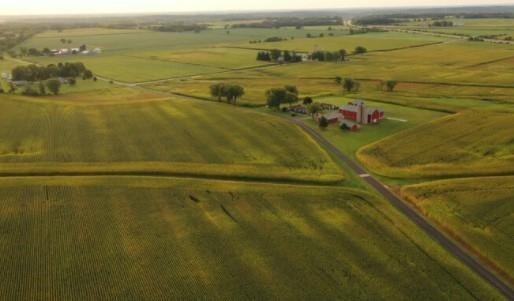For some time now, the bulk of the world’s food has been produced through means of industrial agriculture – this has involved large farms growing the same crops each year while using various chemicals (pesticides and fertilizers) that can have a negative impact on soil, water, and the air. Considering the fact that these practices are known to squander valuable resources, it is no surprise that farmers are looking for new ways to produce food, including by means of sustainable agriculture.

What is Sustainable Agriculture?
According to the National Institute of Food and Agriculture (NIFA), “Sustainable agricultural practices are intended to protect the environment, expand the Earth’s natural resource base, and maintain and improve soil fertility.” This concept centers on a multi-pronged approach, working to:
- Ensure farms can be as profitable as possible.
- Promote environmental stewardship.
- Help the surrounding community, including other farms.
- Maximize production for food and other necessary resources (i.e., fibers for clothes).
Benefits of Sustainable Farming
There are several benefits that can be realized through the implementation of sustainable agriculture. By making the move toward sustainable agriculture, farmers can:
- Help replenish not only the land but also other natural resources, such as water and air.
- Reduce chemical use, save scarce resources, and shrink their reliance on nonrenewable energy.
- Minimize costs and focus more on profits through the use of technology that limits surprises.
- Improve food production without being wasteful.
The points listed above are just a few of the benefits that can be realized through this agricultural practice. And while it may not be an option for some based on any number of factors, sustainable agriculture is truly a great way to help farmers get the most out of their land.
Sustainable Agriculture Practices & Methods
As sustainable agriculture grows as a priority around the world, many are trying to understand what it entails. Because despite what most may believe to be true, sustainable agriculture doesn’t necessarily mean organic only. Other methods and practices for this type of farming include the following.
Crop Rotation and Diversity
By planting a variety of crops, farmers can ensure healthier soil and better pest control. To achieve these benefits, intercropping (growing different crops in one area) and intricate multi-year crop rotations should be put into practice.
Cover Crops
Cover crops play an important role in protecting healthy soil that might otherwise be left bare during off-season times. They prevent erosion, replenish soil nutrients, and keep weeds in check, thereby reducing the need for chemical intervention (i.e., herbicides).
Integration of Crop and Animal Production
In most agriculture spaces, farmers tend to keep their crops and animals separate from one another. However, by bringing these two pieces together, farmers can build more efficient, profitable operations that leverage their own resources (i.e., manure fertilizers) to thrive.
Integrated Pest Management
The United States Environmental Protection Agency (EPA) defines Integrated Pest Management as “an effective and environmentally sensitive approach to pest management that relies on a combination of common-sense practices.” In other words, this is not a one-sided pest control method but, rather, a series of pest management evaluations, decisions, and controls. Steps include setting an action threshold to determine if intervention is necessary; monitoring for and identifying pests to ensure that beneficial organisms would not be impacted; managing the crop, lawn, or indoor space in question to prevent pests from becoming a threat; determining the proper control method both for effectiveness and risk.
Agroforestry Practices
Agroforestry is the “intentional integration of trees and shrubs into crop and animal farming systems to create environmental, economic, and social benefits,” as defined by the U.S. Department of Agriculture. And this concept is nothing new – it has been practiced both in the United States and around the world for centuries, demonstrating its true value in the world of agriculture.
How John Deere Prioritizes Sustainability in Agriculture
For generations, the goal for most farmers has been to care for their land in ways that preserve it. By making the most out of every resource, from the smallest seed to the largest piece of equipment, these individuals can ensure their businesses thrive in terms of productivity and profitability. This has also included protecting the environmental resources needed to sustain their crops, such as the air and their soil.
Click here to see more...